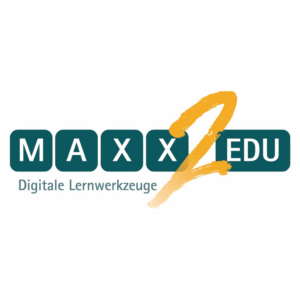MICRO QUEST
Network Member
Olaf Kleinschmidt

Germany
Sectors:
- Education
- Information Technology and Computer Science
- Maths
"We are who we are because of what we learn and what we remember."
Eric Kandel
The question
The learning process follows the following principle when using the "Toolbox":
Topic-specific information is collected on the basis of a question or task. This information is first organised and an overview of the various aspects of the topic is created.
First theses
Initial theses and assumptions about connections can then be created by differentiating and structuring the learning material relevant to the task with the help of the tools in the toolbox.
Deeper understanding
Fundamental patterns of thought and explanation can be represented in this way, acquired knowledge can be made connectable and cognitive learning can be activated. By establishing knowledge links between the individual learning contents, a deeper understanding is created and the acquired knowledge remains available in the long term.
Eric Kandel
The question
The learning process follows the following principle when using the "Toolbox":
Topic-specific information is collected on the basis of a question or task. This information is first organised and an overview of the various aspects of the topic is created.
First theses
Initial theses and assumptions about connections can then be created by differentiating and structuring the learning material relevant to the task with the help of the tools in the toolbox.
Deeper understanding
Fundamental patterns of thought and explanation can be represented in this way, acquired knowledge can be made connectable and cognitive learning can be activated. By establishing knowledge links between the individual learning contents, a deeper understanding is created and the acquired knowledge remains available in the long term.
Our Micro-Credential offer:
QUESTIONS - the learners ...
... recognise situations and facts and assess them,
understand problems,
derive solution-relevant questions,
structure information requirements according to scope and importance,
break down complexities and create subtasks if necessary,
plan and organise work processes.
SEARCHING - the learners ...
... make assumptions about promising locations and sources,
develop search strategies and apply them,
formulate appropriate search terms and can justify them,
use logical and semantic operators for their search queries,
find, select and save information.
VERIFYING - the learners ...
... verify information found by comparing (sources),
evaluate their research results on the basis of criteria such as probability, credibility, authorship, topicality, etc...
recognise and consider the contexts and intentions of information, reduce the amount and scope of information to a practicable size,
organise and hierarchise information in relation to the task.
CONNECT - learners ...
... cluster, structure and combine information,
recognise causalities and interactions,
establish and present connections,
reduce deficits and gaps,
co-operate and collaborate with other learners.
APPLY - the learners ...
... create solutions and test them in practice,
set up variants and compare and evaluate them,
summarise, prepare and present the results of their work,
discuss and review the solutions and approaches together,
take up external advice and use feedback constructively.
TRANSFER - the learners ...
... inductively generalise the solutions found,
develop routines for effective learning by acquiring and perfecting interdisciplinary
overarching competences,
react appropriately to variability, i.e. flexibly and creatively.
... recognise situations and facts and assess them,
understand problems,
derive solution-relevant questions,
structure information requirements according to scope and importance,
break down complexities and create subtasks if necessary,
plan and organise work processes.
SEARCHING - the learners ...
... make assumptions about promising locations and sources,
develop search strategies and apply them,
formulate appropriate search terms and can justify them,
use logical and semantic operators for their search queries,
find, select and save information.
VERIFYING - the learners ...
... verify information found by comparing (sources),
evaluate their research results on the basis of criteria such as probability, credibility, authorship, topicality, etc...
recognise and consider the contexts and intentions of information, reduce the amount and scope of information to a practicable size,
organise and hierarchise information in relation to the task.
CONNECT - learners ...
... cluster, structure and combine information,
recognise causalities and interactions,
establish and present connections,
reduce deficits and gaps,
co-operate and collaborate with other learners.
APPLY - the learners ...
... create solutions and test them in practice,
set up variants and compare and evaluate them,
summarise, prepare and present the results of their work,
discuss and review the solutions and approaches together,
take up external advice and use feedback constructively.
TRANSFER - the learners ...
... inductively generalise the solutions found,
develop routines for effective learning by acquiring and perfecting interdisciplinary
overarching competences,
react appropriately to variability, i.e. flexibly and creatively.
